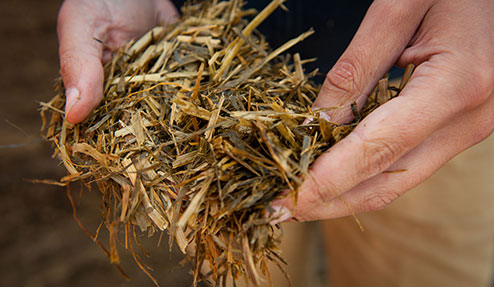7 steps to cutting forage waste

Poor optimisation of forage yields through simple losses in field, clamp and at feeding out could be causing dry matter (DM) declines upwards of 40%.
“Grazed grass costs about £35/t dry matter and silage £80-150/t DM to grow and feed,” explains George Fisher of British Grassland Society (BGS).
See also: AB Vista NIR unit reveals forage quality on the spot
“So when we consider that replacing losses with concentrate can be £250/t DM, it is essential that farms are ensuring they have robust systems and plans in place to prevent unnecessary waste as much as possible.”
The seven steps will go a long way in minimising waste and maximising the use of forage.
“Soil health is very important to successful growth, non-compacted soils are able to hold at least three times more water resulting in an increase of grass growth of 20–30%,” Dr Fisher explains. “In addition healthier soils utilise nutrients more efficiently, maximising investment.”
In addition to soil health, farmers are encouraged to evaluate their grass management decisions in terms of variety, weed management and ensuring efficient grazing practices to ensure that all are helping a farm reach its potential.
“The use of an inoculant, containing one or more bacteria or a biological agent, can dramatically improve the rate and efficiency of fermentation,” says Louis Hurdidge, ruminant specialist at Sil-All. “This will reduce dry matter losses and result in more stable silage that has retained digestibility, nutrients and proteins from the original forage.”
“Each system is different,” Mr Hurdidge concludes. “However quality forage will drive profits in all systems so thinking carefully about the process and aiming for success at each stage can improve feed intake, live weight gain and increase milk yields from grass and forage.”
| Seven steps for forage success | ||||
|---|---|---|---|---|
| Step | Reasons for losses | Typical DM losses | Amount left from 15t/ha DM crop potential | Solutions to consider |
| Soil management |
|
0-20% | 15 at best, 12 at worst |
|
| Variety choice |
|
0-10% | 15 at best, 10.8 at worst |
|
| Weed control |
|
0-10% | 15 at best, 9.7 at worst |
|
| In field |
|
5-15% | 14.3 at best, 8.3 at worst |
|
| At the clamp |
|
5-10% | 13.5 at best, 7.4 at worst |
|
| During silage |
|
5-20% | 12.9 at best, 6.0 at worst |
|
| At feeding out |
|
5-20% | 12.2 at best, 4.8 at worst |
|
| Source: British Grassland Society | ||||
